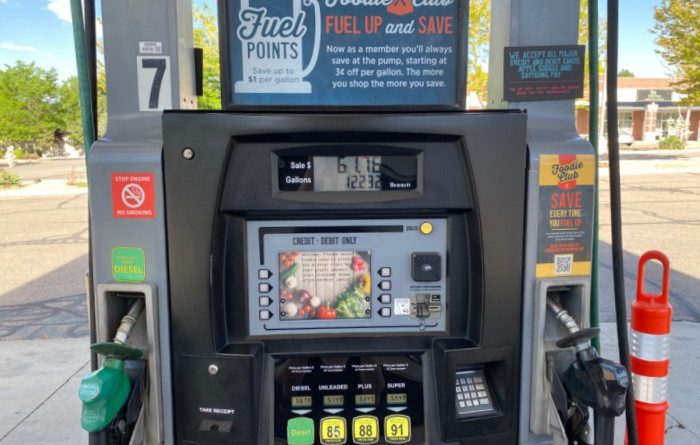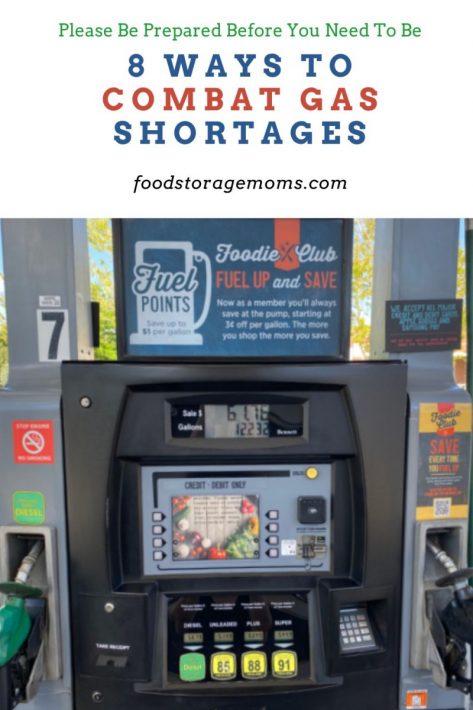By Linda Loosli

There’s been a lot of talk lately about gas shortages. With gas prices on the rise, some people are worried that we’re running out of gas. We have also seen things on social media with gas stations out of fuel. But is there really a gas shortage?
Well, it depends on how you define “shortage.” If you mean that we’re running out of gas, then no, there’s no shortage. We have plenty of gas reserves, and we’re producing more gas than ever before, so it appears we’re not in danger of running out any time soon.
However, if you mean that there’s a shortage of gas relative to demand, then yes, there is a shortage right now. Thanks to the pandemic, demand for gas had decreased significantly. But at the same time, gas production had also decreased. As a result, there’s currently a surplus of gas, but it’s not getting to the stations like it did pre-pandemic.
Over the past few months, more and more people are going back to their regular workplace and the related commute. Families are also anxious to get back on the road to their favorite vacation spot or to visit extended family they haven’t seen for a while, prompting more gas to be consumed. So while we’re not in danger of running out of gas anytime soon, prices may continue to rise until supply and demand return to equilibrium.

Why Is There a Gas Shortage?
There are a few reasons why there’s currently a gas shortage. First, as mentioned earlier, the pandemic caused a decrease in demand for gas. With fewer people commuting to work and school, there was less need for gas.
At the same time, gas production has also decreased. This is due to a combination of factors, including the closure of gas wells, the decrease in oil production (which gas is a byproduct), and the fact that many gas refinery workers have been laid off or are working remotely.
What Is Causing Rising Gas Prices
Rising gas prices have become a hot topic in recent months, with many drivers wondering what is causing the hikes. While there are a number of factors that contribute to gas prices, one of the main reasons for the current increase is gas shortages.
As gas supplies become tighter, prices go up. This is compounded by the fact that gas is a global commodity, so when there are shortages in one part of the world, it can have an impact on prices everywhere. The US has also been exporting some of our gas as a result of the conflict in Europe. Yes, we have gas, but some is going offshore.
Additionally, gas prices are also influenced by the price of crude oil, which has been rising steadily in recent months. With all of these factors at play, it’s no wonder that gas prices are on the rise. However, there are some things that drivers can do to help offset the increases, such as carpooling or using public transportation.
8 Ways to Combat Gas Shortages
As gas prices continue to rise, many Americans are finding themselves forced to make changes in their driving habits. Here are a few ways to combat gas shortages:
1. Plan Ahead
If you know you’re going to be driving long distances, make sure to fill up your gas tank beforehand. This will help ensure that you don’t run out of gas in the middle of nowhere. It would also be wise to reach out and see if gas will be available along your planned route. Check with the major brands, but also some independent stations so you can develop a backup plan if needed.
2. Check Gas Prices Online
There are a number of websites that offer gas price information, like GasBuddy. By checking prices before you hit the road, you can save money and avoid areas that seem to be more prone to experience gas shortages.
3. Carpool
When gas prices are high, carpooling with friends or family members can help save money. Not only will this reduce your fuel costs, but it will also help reduce traffic congestion and pollution. It may be hard to carpool on a vacation trip, but many of us can certainly carpool to work, the gym, school, grocery shopping, church, and other activities where we know people and can coordinate.
4. Save on Gas with Upside
The Upside is an app that gives you cash back on your gas purchases. All you have to do is download the app, open the app, and then find the gas station with the lowest price or highest cash back option. You may need to register and then check-in to get your money back. Here’s what Upside offers you:
- Up to 25¢/gallon cash back on gas.
- Up to 45% cash back at restaurants and up to 30% cash back at grocery stores.
- A 15¢/gal bonus when you refer friends and family.
- Referrers also earn 1¢/gal every time their referee gets gas using Upside.
There’s no limit to how much you can earn, so start using Upside today! Let me know if it works for you.
5. Use Public Transportation
When gas prices are high, using public transportation can save you money. If you’re not sure how to use your city’s public transportation system, there are a number of apps that can help, such as Google Maps or Transit. Most larger cities have extensive bus routes that make getting from point A to point B fairly easy. They usually offer savings if you buy a monthly pass, and often give students and even the elderly a discount
When gas prices were more reasonable, it was hard to justify using Amtrak or other railroad travel providers for longer trips. Now it makes sense to check out the cost for tickets and compare that to driving your car.
6. Use Gas With No Ethanol
As gas prices continue to rise, many drivers are looking for ways to cut costs. One way to do this is to use gas with no ethanol.
Ethanol is a fuel made from plant products, but it can actually damage your car’s engine. Ethanol is gas mixed with other chemicals, which means when you buy gas with Ethanol, you’re paying for a fuel that may burn faster. This means you are filling up more often.
Even though gas with no Ethanol costs more per gallon, you’ll actually save money in the long run because you’ll need to fill up less often. So if you’re looking to save money at the pump, make the switch to gas with no Ethanol. Your specific car may run differently than others when using gas additives, so give different brands and octanes a try to see if you can cost-effectively make a positive change.
7. Consider a Fuel-Efficient Vehicle
When purchasing a new car, consider fuel efficiency as one of your primary factors. There are many great cars on the market that get excellent gas mileage without sacrificing performance or style. The marketplace is seeing a shift to electric vehicles (EV), and we’ve seen some prices come down on vehicles that are “hybrid,” although car and truck prices have seen major increases in the past couple of years, for various reasons. You may be surprised what you can get for your current car. Car purchases are a major financial decision, so do your homework and don’t rush into any major expenditure like that without putting all the factors on paper for discussion and review with other family members.
8. Stock Up on Gas When Prices are Low
When gas prices dip, make sure to fill up your tank. This will help you avoid gas shortages and high prices when gas prices inevitably rise again.
Additionally, use a 5-Gallon Galvanized Steel Flammable Safety Can or for more gas storage, a 30-Gallon Gas Caddy to stock up on gas when prices dip so you have a reserve. If you add a fuel stabilizer, it can keep your gas fresh for up to two years.
Learn More About Gas Shortages and Prices
- 16 Fascinating Things You Should Know About Gas Prices
- Inflation, Food Shortage, and Gas Crisis
- Why You Should Keep Your Gas Tank Full
Final World
As gas prices continue to rise, it’s important to be aware of ways to combat gas shortages. By planning ahead, checking gas prices online, carpooling, and using public transportation, you can save money and avoid gas shortages. Additionally, consider switching to a fuel-efficient vehicle or stocking up on gas when prices are low.
By following these tips, you can save money and avoid gas shortages. May God Bless this world, Linda
No comments:
Post a Comment